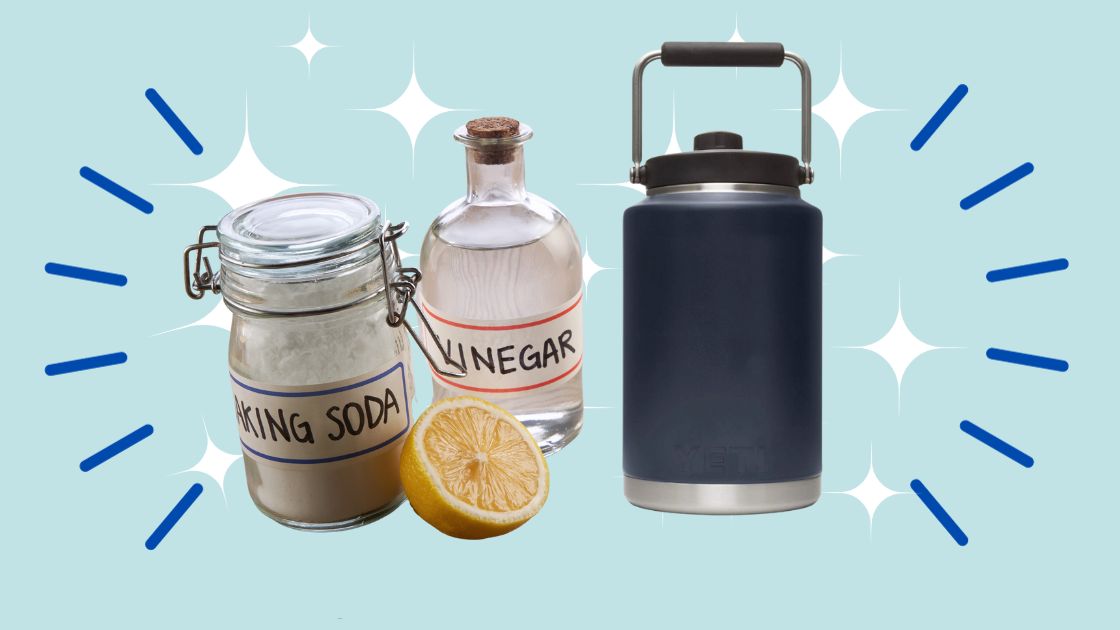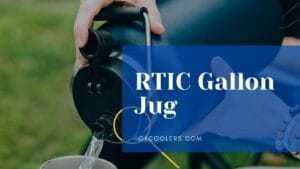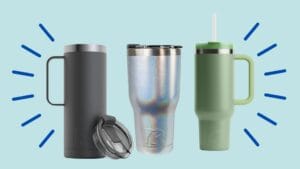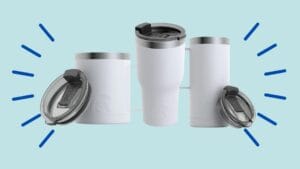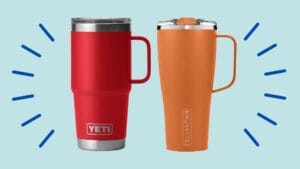Maintaining the cleanliness of your water jugs is more than a chore; it’s a cornerstone of health and flavor. Learning how to clean water jugs effectively doesn’t have to be complicated.
In this guide, you’ll discover easy ways on how to clean water jugs through a step-by-step guide for cleaning water jugs.
Whether they’re plastic, glass, or stainless steel, the principles of cleanliness remain unchanged. By following these effective water jug cleaning techniques, you’ll ensure that every sip of water is as pure and refreshing as nature intended.
Key Takeaways
- Adopt simple and straightforward steps to keep your water tasting great and free from contaminants.
- Understand the significance of a clean water jug for health and how it enhances the water’s quality.
- Uncover the best materials and ingredients to use in the cleaning process.
- Create an eco-friendly cleaning regimen using everyday household items.
- Learn to manage routine maintenance with ease, ensuring longevity and hygiene of your water containers.
- Discover professional insights to elevate your cleaning techniques.
How to clean water jugs Quick Guides
Maintaining the cleanliness of water jugs, particularly those from brands like Yeti, Rtic, and Stanley, is essential for both hygiene and the longevity of the product. Based on my personal experience, here are my simple yet effective cleaning methods to clean these water jugs.
How to Clean Yeti Water Jugs
A simple yet effective method for cleaning Yeti water jugs.
- Mix Solution: Start by preparing a mixture of warm water and dish soap.
- Soak and Scrub: Pour the solution into the Yeti jug and let it sit for 5-10 minutes. Then, use a bottle brush to scrub the interior thoroughly.
- Clean the Lid: Disassemble the lid if possible and soak it in the same soapy water.
- Tackle Tough Stains: Create a paste of soap and baking soda for stubborn stains. Apply this inside the jug and scrub vigorously with a bottle brush.
- Rinse Thoroughly: Ensure you rinse the jug and lid well with hot water to remove all soap and baking soda residues.
- Air Dry: Allow the jug to air dry completely to prevent moisture buildup.
How to Clean Rtic Water Jugs
The approach for Rtic jugs I use is slightly different.
- Prepare Bleach Solution: Mix a solution of 50/50 bleach and water.
- Apply and Wait: Pour this mixture into the Rtic jug and let it sit for a while to loosen any grime.
- Scrub Gently: After the solution has had time to work, scrub the inside of the jug with a brush.
- Vinegar Rinse for Odors: If there’s an odor issue, rinse the jug with a mixture of vinegar and hot water.
- Final Rinse: Rinse the jug thoroughly with water to ensure no bleach or vinegar residue remains.
- Dry Completely: Let the jug air dry.
How to Clean Stanley Water Jugs
Stanley jugs, known for their durability, also require regular cleaning. A highly recommended method I use is using baking soda and hot water.
- Baking Soda Solution: Mix baking soda with hot water and pour it into the Stanley jug.
- Let It Sit: Allow the solution to sit in the jug, especially if there are visible stains or residue.
- Scrub Away Stains: Use a bottle brush to scrub the inside of the jug, focusing on stained areas.
- Vinegar for Persistent Smells: For persistent odors, use a mixture of vinegar and baking soda.
- Rinse Well: Rinse the jug thoroughly with water to remove any cleaning solution.
- Air Dry: Ensure the jug is completely dry before storing or using it again.
In all cases, it’s crucial to rinse the jugs thoroughly after cleaning to remove any cleaning agent residues. Air drying is recommended to prevent moisture buildup. Regular maintenance not only ensures the cleanliness of the jugs but also preserves their quality and usability over time.
Why Keeping Water Jugs Clean is Essential for Your Health
Drinking water is a fundamental human need, and it’s imperative to ensure the container it comes from is as clean as the water itself.
Water jugs, being frequently used, can become a breeding ground for unwanted germs if not maintained properly. Knowing the importance of water jug hygiene can motivate one to adhere to regular cleaning rituals.
The following outlines why meticulous maintenance of water jugs is not just about cleanliness but also about safeguarding your health.
Preventing Bacteria and Mold Growth
Bacteria and mold thrive in moist environments, and water jugs offer the perfect habitat when not cleaned regularly.
Consuming water from a contaminated jug can lead to various health complications, including gastrointestinal infections. Implementing water jug cleaning tips can hinder the growth of these microbes, ensuring your drinking water remains safe.
Maintaining the Taste and Purity of Your Water
Residue from previous refills and potential bacterial build-up can affect the taste and odor of your water, detracting from its freshness.
Regular cleaning prevents the accumulation of these taints, which means maintaining hygiene in water jugs is directly connected to preserving the purity and freshness of the water you drink.
Extending the Lifespan of Your Jug
Careful cleaning not only preserves your health and water quality but also protects your water jug from early wear and tear.
Mineral deposits and other sediments can cause material degradation over time. Through consistent and effective cleaning routines, you can extend the lifespan of your jugs, making it a cost-effective practice as well.
| Contaminant | Health Risk | Prevention Tip |
|---|---|---|
| Bacteria (e.g., E.coli) | Gastrointestinal Illnesses | Disinfect with a vinegar solution weekly |
| Mold & Mildew | Respiratory Issues | Regular air drying and sunlight exposure |
| Calcium & Mineral Build-up | Can be ingestible in small amounts but affects taste/purity of water | Use a mix of baking soda and water for scrubbing |
What You’ll Need: Tools and Ingredients
Embarking on a mission to ensure the cleanliness and safety of your plastic water jugs shouldn’t require harsh chemicals.
Instead, a few household staples and the right cleaning tools can do wonders for your hydration vessels. Below, find a guide to the most efficient and gentle products to maintain the pristine condition of your jugs.
Common Household Products
Seeking how to clean plastic water jugs without bleach leads to the discovery that several items found in the average kitchen pantry can be surprisingly effective. For instance, white vinegar and baking soda not only disinfect but also help in removing stubborn stains and odors.
Recommended Cleaning Brushes and Sponges
The key to scrubbing away residue and ensuring a thorough clean lies in the tools you use. Opt for brushes with long, sturdy handles to reach the bottom of the jug, and sponges with a gentle, yet abrasive, side to tackle any grime without scratching the surface.
Substitutes for Commercial Cleaners
When considering recommended products for cleaning water jugs, natural alternatives are not only eco-friendly but also highly efficient. A diluted solution of apple cider vinegar, for example, is a safe bet for those sensitive to the potent smell of its white counterpart. Add a squeeze of lemon juice for a fresh scent and additional antibacterial properties.
- Vinegar Solution: Mix equal parts water and white vinegar, or use a concentrated dose for heavy-duty jobs.
- Baking Soda Paste: Create a paste with baking soda and a small amount of water to spot-clean or deodorize.
- Hydrogen Peroxide: A little hydrogen peroxide can provide a bubbling action that aids in removing contaminants.
Remember, regular maintenance of your water jugs is essential, and these expert tips on cleaning water jugs are designed to help ensure you have access to safe, clean drinking water every day. So, embrace these straightforward, non-toxic methods and keep your jugs in excellent condition.
How to Clean Water Jugs Without Bleach
Embracing DIY water jug cleaning methods is not just a trend; it’s a lifestyle change towards healthier habits. Vinegar, a staple in the pantry, emerges as a natural and eco-friendly cleaning technique to maintain your water jug’s cleanliness.
With the growing awareness of the impact of chemicals on our environment, how to clean water jugs with vinegar becomes not just a question, but also a practical solution.
Vinegar’s acidic nature makes it perfect for disinfecting and deodorizing, ensuring that your water jugs remain safe and fresh without the use of harsh substances like bleach.
We’ll uncover the steps and ratios needed to use vinegar effectively, ensuring that you’re equipped with knowledge for an eco-conscious and potent cleaning routine.
- Creating Your Vinegar Cleaning Solution: Combine one part white distilled vinegar with one part water to create a potent mix that tackles germs and residue.
- Empty and Rinse: Start by emptying your jug and giving it a preliminary rinse with warm water to remove any loose debris.
- Fill and Soak: Fill the jug with the vinegar solution. Let it sit for several hours, or for best results, overnight.
- Scrub and Rinse: After soaking, use a long-handled brush to scrub the inside of the jug thoroughly. Rinse with warm water to remove all traces of vinegar.
- Air Dry: Invert your jug on a dish rack and allow it to air dry completely before refilling.
Following this approach not only leverages a common household item but also ensures that you’re partaking in methods that benefit both your health and the environment.
Step-by-Step Guide How to Clean Water Jugs with Vinegar

When it comes to maintaining the cleanliness of your water jugs, vinegar is not just a kitchen staple but also a powerful and eco-friendly cleaning agent.
Below, we’ll guide you through the process of using vinegar to cleanse your water jugs, ensuring they’re free from contaminants and odors. This method is not only effective but also easy and cost-efficient, aligning with the most sought-after effective water jug cleaning techniques.
Mixing the Vinegar Solution
The first step in how to clean water jugs with vinegar is preparing your vinegar solution. A solution that’s too diluted may not be as effective, while one that’s too strong may leave a lingering taste or smell. The ideal ratio is a simple yet effective mixture that can cut through residue and disinfect the container.
| Vinegar | Water | Recommended Use |
|---|---|---|
| 1 Part | 1 Part | For normal cleaning |
| 1 Part | 2 Parts | If concerned about taste/smell |
| 1 Part | Water Only | For a heavy duty cleanse |
Thorough Cleaning Technique
To ensure that the interior of the water jug is thoroughly cleaned, follow these steps:
- Fill the jug with the vinegar solution, ensuring all surfaces come into contact with the mixture.
- Shake the jug, or use a cleaning brush, to scrub the inside walls.
- For tough stains or odors, let the solution sit for a few hours, or even overnight. This prolonged exposure allows the vinegar to break down impurities.
- Pay special attention to the lid and spout, areas where bacteria can easily accumulate but are often overlooked.
Rinsing and Drying
After cleaning, it’s crucial to rinse the jug thoroughly with warm water to remove any traces of vinegar. Rinsing prevents any residual vinegar flavor from tainting your water. Here’s the right way to rinse:
- Fill the jug halfway with warm, clean water. Shake well and empty.
- Repeat the rinse process 3-4 times until the scent of vinegar is no longer perceptible.
Finally, air-dry your water jug completely before using it again. This step is essential, as any remaining moisture can encourage bacterial growth, undermining the effectiveness of your cleaning efforts. Turn the jug upside down and let it air-dry on a rack or use a clean towel to pat dry any residual moisture.
By incorporating these simple steps into your cleaning routine, you can rest assured that your water jug will not only be spotless but also safe for everyday use.
How to Clean Water Jugs Utilizing Baking Soda for a Deeper Clean
When you’re aiming for not just a simple rinse but a thorough cleansing of your water jug, using baking soda can be a game-changer. This common household item is known for its powerful cleaning properties, including the ability to neutralize odors and gently scrub surfaces without scratching. We will tell you how to clean water jugs with baking soda.
To start, you’ll need to form a paste or solution using baking soda. For a paste, mix three parts baking soda with one part water. This is particularly effective for targeting stubborn stains and residue. On the other hand, for a solution, dissolve four tablespoons of baking soda in a quart of warm water. Here’s a detailed guide on using both methods for an impactful clean:
- Paste: Apply the baking soda paste directly to the interior of the jug, using a brush or sponge to work it into any stains or buildup. Allow it to sit for 15-30 minutes before scrubbing gently.
- Solution: Fill the jug with the baking soda solution, and if possible, let it soak for at least a couple of hours, or overnight for a deeper clean. Shake the solution inside the jug vigorously, then use a brush for a final scrub.
After cleaning, rinse the jug thoroughly with warm water to remove any residual baking soda. The result is not only a cleaner jug but also one that’s odor-free, thanks to baking soda’s natural deodorizing properties.
| Cleaning Type | Instructions |
|---|---|
| Baking Soda Paste | Mix 3:1 ratio of baking soda to water, apply, let sit, scrub, and rinse. |
| Baking Soda Solution | Dissolve 4 tbsp of baking soda in a quart of water, soak, shake, scrub, and rinse. |
| Benefits | Cleanses, deodorizes, non-abrasive, and eco-friendly. |
Remember, regular maintenance using baking soda not only maintains the hygiene of your water jugs but also ensures you’re drinking clean, taste-free water. Share this section with anyone seeking effective water jug cleaning techniques – baking soda might just become their new go-to!
Specialized Techniques for 1 Gallon Water Jugs
Cleaning 1-gallon water jugs can be challenging due to their limited access points and narrow design. Yet, with the right techniques, maintaining hygiene in water jugs is achievable. The following advice is tailored specifically for the intricate areas of these sizable containers.
Addressing Small Openings and Tight Spaces
For the small openings typical of 1-gallon jugs, use long-handled brushes specifically designed to fit through the narrow neck. These allow you to reach the bottom and scrub the corners where sediments may build up. If brushes are unavailable, a simple solution is to fill the jug with a mixture of water, a squirt of dish soap, and rice. Shake vigorously so the rice can act as an abrasive to dislodge any grime.
Proper Disassembly for Effective Cleaning
It’s essential to disassemble any parts that come off, such as rings, valves, or straws. Soaking these components in a cleaning solution and then using small cleaning tools, like pipe cleaners or cotton swabs, is the best approach to address the hard-to-reach spots. After thorough scrubbing, rinse all parts with hot water to ensure the removal of any cleaning agent residue.
Sanitizing Lids and Spouts
Lids and spouts require special attention as they are hotspots for bacteria due to frequent handling and moisture. A proper sanitation process is vital for these parts. Utilize a diluted bleach solution, about one tablespoon of bleach to one gallon of water, submerge the parts, and allow to soak for at least five minutes before rinsing well with hot water.
| Cleaning Tool | Purpose | Usage Tips |
|---|---|---|
| Long-handled brush | Reaching the bottom of the jug | Rotate and push the brush to all corners |
| Rice | Scrubbing hard-to-reach areas | Combine with soap and water and shake |
| Pipe cleaners/cotton swabs | Cleaning small components | Insert into straws and crevices and twist |
| Bleach solution | Sanitizing lids and spouts | Dilute properly and soak parts |
By adopting these specialized cleaning practices and focusing on maintaining hygiene in water jugs, you’ll ensure your 1-gallon water jug stays in pristine condition and your water remains safe and pleasant to drink.
Cleaning High-Quality Yeti, Rtic, and Stanley Water Jugs
Owners of premium water jugs from Yeti, Rtic, and Stanley can rest assured that with the right care, their investment is well protected. These high-quality jugs are renowned for their durability and performance, yet they still require regular cleaning to maintain their top-notch condition. Here’s how to do it without causing any damage to these great jugs.
General Cleaning Instructions:
Begin with a basic rinse of the interior with warm water. If you’ve been using the jug for water only, often a thorough rinse will do. However, if there have been other liquids inside or you haven’t cleaned it for a while, you’ll want to follow the steps below.
- Fill the jug with a mixture of warm water and a small amount of mild dish soap.
- Seal and shake the jug to distribute the soap solution throughout.
- Use a soft-bristled brush to gently scrub the interior, being careful with areas around seals and the mouthpiece.
- Rinse thoroughly with clean water to ensure no soap residue is left behind.
- Air-dry the jug upside down, with the lid off, to prevent moisture buildup.
Dealing with Stubborn Stains and Odors:
For stains or odors that persist after the general cleaning, consider using a baking soda and water paste or a vinegar solution. Apply paste to the stained area, let sit for a few minutes, then scrub gently and rinse. For odors, fill the jug with a 1:1 solution of white vinegar and water, let it sit for a few hours, then rinse well and dry.
| Cleaning Agent | Yeti | Rtic | Stanley |
|---|---|---|---|
| Mild Dish Soap | ✔ | ✔ | ✔ |
| Baking Soda Paste | ✔ | ✔ | ✔ |
| Vinegar Solution | ✔ | ✔ | ✔ |
| Soft-Bristled Brush | ✔ | ✔ | ✔ |
Remember, Yeti, Rtic, and Stanley water jugs are built to last, but even the most rugged of jugs can fall prey to the elements without proper care. By following these simple yet effective cleaning tips, you can ensure that your water jug remains a hygienic, odor-free companion on all your adventures.
In case of special instructions or finishes particular to your premium water jug, always refer to the manufacturer’s guidelines for the best cleaning practices to keep your Yeti, Rtic, or Stanley water jug in pristine condition.
Expert Tips to Enhance Your Water Jug Cleaning Routine
Maintaining the cleanliness of your water jug not only supports your health but also ensures the longevity of your container. Experts in household maintenance have shared some essential water jug cleaning tips to ensure that your hydration experience remains safe and enjoyable. Whether you’re using your water jugs at home, during sporting activities, or while out in nature, following these best practices for cleaning water jugs can make a significant difference.
Frequency: How Often to Clean Your Jugs
Optimal cleanliness is achieved by regular maintenance of your water jugs. It’s recommended that you clean your water jugs after each use to prevent the buildup of bacteria and to maintain the taste of your water. For jugs not used daily, a thorough cleaning before and after storage is sufficient to keep them fresh and ready for the next use.
Handling Stains and Odors
Stubborn stains and odors can compromise the purity of your water, making it imperative to handle these issues promptly. A blend of natural ingredients like vinegar or baking soda with water can be effective for dealing with these problems. Allow the mixture to sit in the jug for a few hours, ensuring the solution reaches all areas, then scrub gently with a soft brush before thoroughly rinsing.
Best Practices for Drying and Storage
Proper drying and storage are critical in preventing mildew and bacterial growth. After cleaning, allow your water jug to air-dry completely before sealing it. Storing your jug with the lid off can also prevent the formation of condensation and unwelcome smells.
| Cleaning Step | Tip | Reason |
|---|---|---|
| Rinse After Use | Quick rinse with hot water | Prevents bacteria buildup |
| Deep Cleaning | Use a vinegar or baking soda solution | Addresses stains and odors |
| Air-Drying | Use a drying rack or stand | Ensures thorough drying to prevent mold |
| Storage | Store upright with the lid off | Prevents odor formation and bacterial growth |
Recommended Products for Optimal Water Jug Hygiene
Whether you have a reliable jug you carry every day or a collection used for outdoor adventures, having the right cleaning products and tools is the secret to ensuring your water jug’s hygiene and longevity.
With the sustainability wave gaining momentum, many are turning to eco-friendly cleaning techniques that are as kind to the environment as they are effective. Below are some top recommended products for cleaning water jugs and indispensable tools for making the task easier.
Eco-Friendly and Effective Cleaners
Switch out harsh chemicals for green, efficient alternatives that deliver a thorough cleanse without leaving behind harmful residues. Biodegradable solutions, like Seventh Generation’s Free & Clear Unscented Liquid Cleaner, exhibit uncompromising grit against grime while maintaining safety for you and the environment.
This, paired with Method’s Antibacterial All-Purpose Cleaner, can ensure your jug stays sanitary and sparkling without the noxious fumes associated with traditional cleaning agents.
Tools That Make Cleaning Easier
The challenge of cleaning water jugs often lies in their shape and design. A long-handled brush such as OXO Good Grips Water Bottle Cleaning Set reaches deep into jugs, scrubbing away at difficult-to-reach spots. Don’t underestimate the power of a simple sponge paired with a bit of elbow grease. For those intricate parts, like lids and threads, consider a set of mini brushes specifically designed for the task, such as the CamelBak Cleaning Brush Kit.
When to Consider a Professional Cleaning Solution
There are instances when it might be necessary to seek out professional-grade solutions, particularly when contending with substantial mineral buildup or lingering odors. For these cases, a product like Bottle Bright Cleaning Tablets can do wonders, effervescently fizzing away stubborn contaminants with minimal effort on your part. Remember, while DIY solutions are great for regular maintenance, sometimes a targeted professional option is what’s needed to reinstate your jug’s purity and freshness.
| Cleaning Product | Type | Purpose | Recommended Use |
|---|---|---|---|
| Seventh Generation Free & Clear | Liquid Cleaner | General Cleaning | Biodegradable and Unscented |
| Method Antibacterial Cleaner | All-Purpose Cleaner | Sanitizing | Antibacterial Properties |
| OXO Good Grips Bottle Brush | Brush Set | Physical Scrubbing | Ergonomic Design for Easy Reach |
| CamelBak Cleaning Brush Kit | Mini Brush Set | Cleaning Lids and Threads | Specialized for Small Parts |
| Bottle Bright Cleaning Tablets | Cleaning Tablets | Removing Stains and Odors | Professional-Grade Clean |
DIY Water Jug Cleaning Methods for the Eco-Conscious
For the eco-conscious individual, finding DIY water jug cleaning methods that align with sustainable lifestyles is as important as keeping hydration close at hand. We delve into simple yet eco-friendly cleaning techniques that leverage natural products you likely already have in your home. These methods ensure that your water jug remains a clean vessel for your daily water intake without the environmental footprint associated with many commercial cleaners.
Cleaning your water jug doesn’t require harsh chemicals; instead, consider the following natural ingredients and their corresponding methods:
- Baking Soda & Water: Create a paste to coat the inside of your jug, then scrub gently with a brush. Baking soda is great for removing stains and odors.
- White Vinegar & Water: Mix a solution of equal parts vinegar and water, fill your jug, and let it sit for a few hours before rinsing thoroughly. Vinegar acts as a natural disinfectant.
- Lemon Juice & Salt: A mixture of lemon juice and salt can be used to scrub the jug, leaving a fresh scent and leveraging lemon’s antibacterial properties.
Not only do these ingredients avoid harming the environment, but they also maintain the integrity of your jug and prevent any unwanted chemicals from contaminating your water.
Remember, consistent care and cleaning can extend the lifetime of your water jug significantly. Happy hydrating!
Final Thoughts On How To Clean Water Jugs
Throughout this comprehensive journey, we’ve equipped you with effective water jug cleaning techniques, ensuring you can maintain exceptional hygiene in your water jugs, and, in turn, uphold your health and the taste of your water. We’ve explored everything from the essentiality of keeping your jugs clean to prevent bacteria and mold, to the various everyday household items you can repurpose for this task, sidestepping the need for harsh chemicals.
From vinegar to baking soda solutions, the DIY water jug cleaning methods presented cater to an eco-friendly lifestyle while guaranteeing a thorough cleanse. We delved into specifics for popular brands like Yeti, Rtic, and Stanley, ensuring that no matter the design or brand of your jug, you’re well-prepared to tackle any cleaning challenge. Moreover, expert tips and recommended products have armed you with knowledge to heighten your cleaning routine effectiveness.
Embracing these practices will not only assure that you’re sipping on pure and fresh-tasting water but will also extend the service life of your jugs, saving money and resources over time. So take this advice to heart and make water jug hygiene a cornerstone of your daily health and wellness regimen.
FAQ
Why is it important to clean my water jug regularly?
Regularly cleaning your water jug is crucial to prevent the growth of bacteria and mold, maintain the purity and taste of your water, and extend the lifespan of your jug. Proper hygiene ensures that the water you consume is safe and refreshing.
What household items can I use to clean my water jug effectively?
You can clean your water jug using common household items like vinegar or baking soda, which are effective, natural, and safe for cleaning. These ingredients help remove odors and disinfect without the need for harsh chemicals.
How can I clean water jugs with vinegar?
To clean water jugs with vinegar, create a solution of equal parts water and white vinegar. Fill your jug with the solution, shake it well and let it sit for a few minutes. Then scrub with a brush, rinse thoroughly, and dry to ensure no vinegar residue remains.
Is baking soda effective for cleaning water jugs?
Yes, baking soda is an effective cleaning agent that can help remove tough stains and neutralize odors. You can make a paste with water to scrub the jug or mix it with water and let it soak to deep-clean and deodorize.
Can you provide tips for cleaning 1-gallon water jugs with small openings?
For cleaning 1-gallon water jugs with small openings, use a long-handled bottle brush to reach into tight spaces. Disassemble any removable parts, like lids and spouts, and soak them in a cleaning solution. Be sure to clean every nook and cranny to prevent bacterial build-up.
Are high-quality water jugs like Yeti, Rtic, and Stanley safe to clean with DIY methods?
Yes, you can safely clean high-quality water jugs with DIY methods. Use gentle, non-abrasive materials to avoid damaging the surfaces. Always consult the manufacturer’s care instructions to ensure compatibility with natural cleaning solutions.
How often should I clean my water jug to keep it hygienic?
It’s recommended to clean your water jug every few days or at least once a week, depending on your usage. Increase the frequency if you fill it with liquids other than water or if it’s exposed to warm temperatures, which can accelerate bacterial growth.
What products are recommended for keeping my water jug clean and hygienic?
Look for eco-friendly, non-toxic cleaners that effectively sanitize without leaving harmful residues. There are specific products designed for cleaning water containers, or you can opt for natural cleaners like vinegar or baking soda. Bottle brushes and specialized cleaning tools can also make the process easier.
What are some eco-conscious DIY cleaning methods for water jugs?
Eco-conscious DIY cleaning methods include using vinegar, baking soda, or a combination of lemon juice and salt. These natural ingredients are environmentally friendly, readily available, and can effectively clean and disinfect your water jug.

